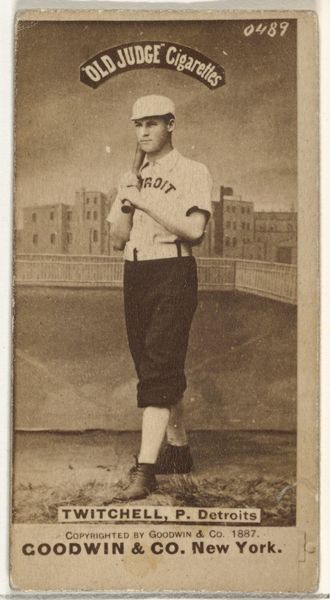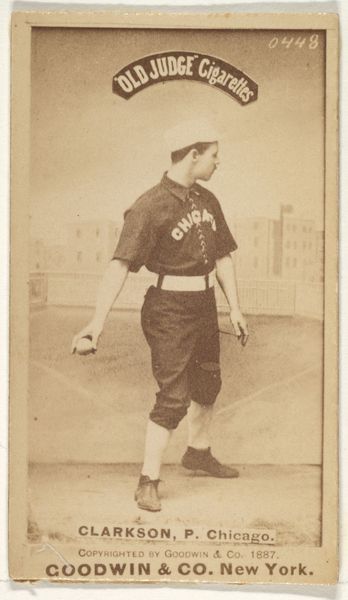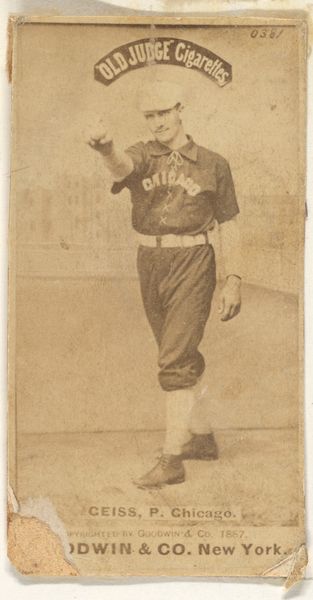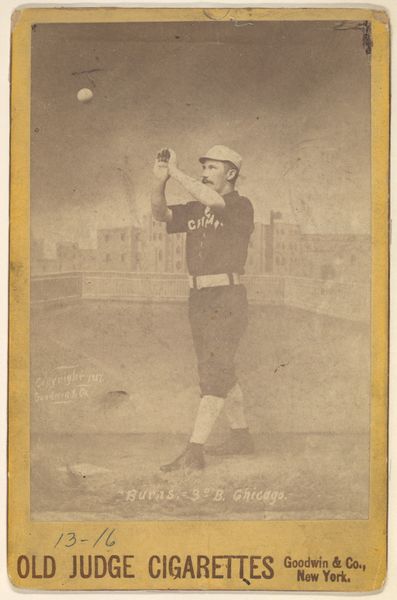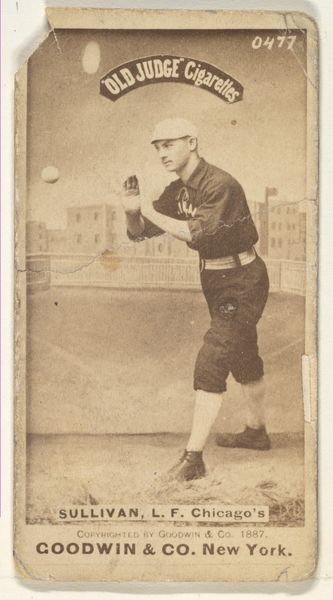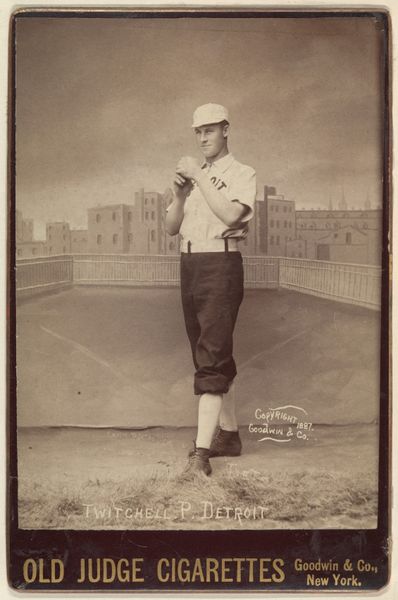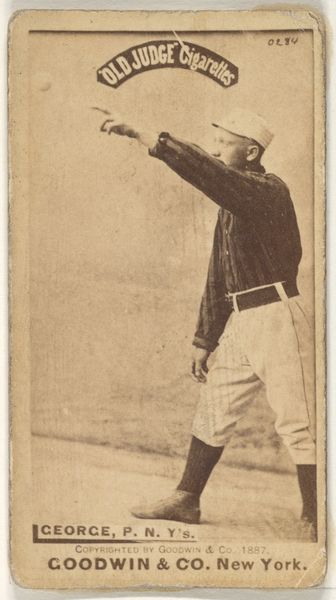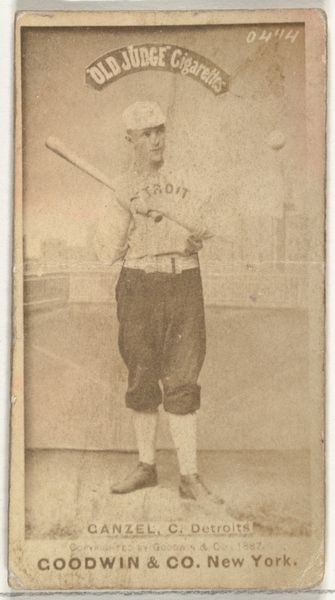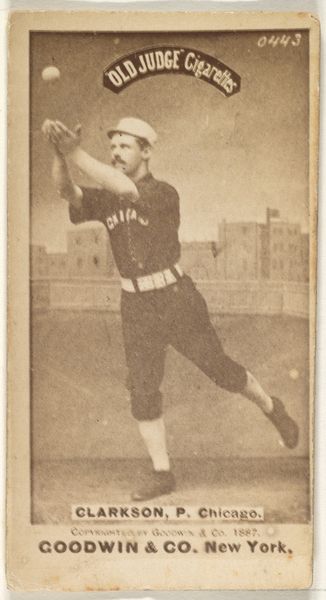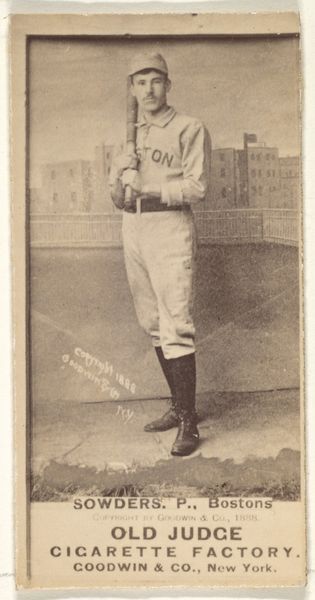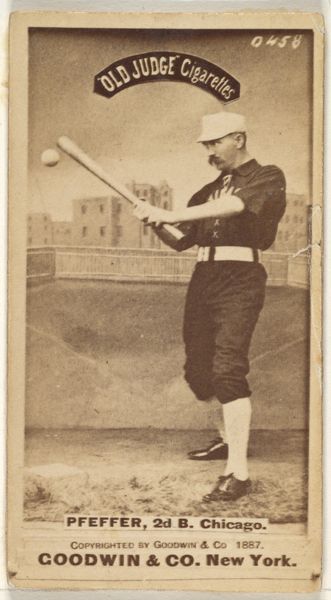
T.C. Burns, 3rd Base, Chicago, from the Old Judge series (N172) for Old Judge Cigarettes 1887
0:00
0:00
drawing, print, photography
#
portrait
#
drawing
#
pictorialism
# print
#
impressionism
#
baseball
#
photography
#
genre-painting
Dimensions: sheet: 2 11/16 x 1 3/8 in. (6.9 x 3.5 cm)
Copyright: Public Domain
Curator: It's extraordinary how much social history can be gleaned from what was, ostensibly, an advertisement. Editor: Absolutely, this photographic print, dating back to 1887, presents T.C. Burns, the third baseman for Chicago, in a portrait taken by Goodwin & Company for the Old Judge Cigarettes series. My initial impression is its sepia tone evokes nostalgia, yet it also projects a determined spirit, almost a quiet heroism. Curator: Nostalgia definitely plays a key role. These baseball cards, inserted in cigarette packs, acted as cultural currency. They helped to construct the image of the baseball player as an aspirational figure and were avidly collected by people of all social classes, connecting them to a larger cultural narrative around sports and leisure. Editor: The soft-focus background and deliberate pose—bat raised, gaze focused—reminds me of classic portraits. The 'Chicago' emblazoned across his chest serves as an icon. This card offered fans something tangible, a symbol representing their team and the city’s pride. How significant the name 'Old Judge', suggesting authority and reliability at a time when cigarettes' harm wasn't common knowledge. Curator: Right, and the fact that baseball imagery was used specifically suggests a strategic targeting of a male audience, associating their product with vigor and healthy competition—despite the health consequences of smoking! What this baseball card is doing is mythmaking on a grand scale: associating the mundane act of smoking with a romantic vision of athleticism and hometown pride. Editor: What I find poignant is the convergence of commerce, identity, and sport embodied in a small cardboard. It reflects the changing social landscape of late 19th-century America, its evolving ideas surrounding fame, leisure, and even personal well-being. Curator: Yes, beyond just sports memorabilia, we see visualized societal aspirations. Studying popular iconography like this is like unlocking the collective dreams—and contradictions—of an era. It offers vital material to help understand our cultural memory. Editor: An artifact of image circulation, aspiration, and identity creation all in a conveniently sized package. Something to remember.
Comments
No comments
Be the first to comment and join the conversation on the ultimate creative platform.

